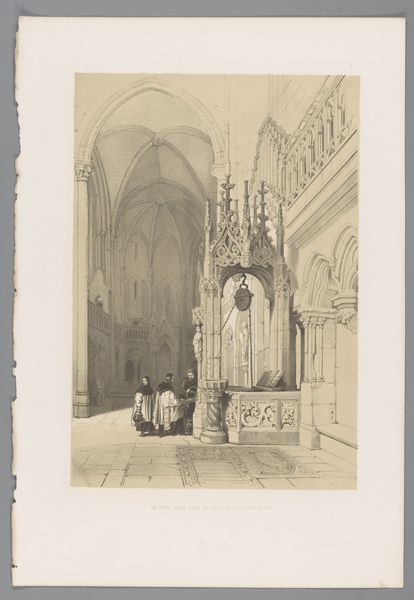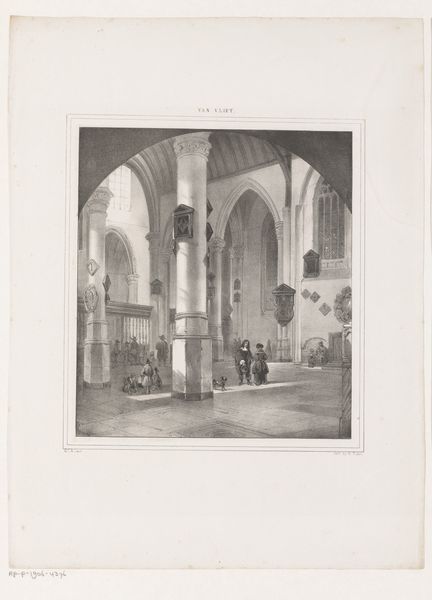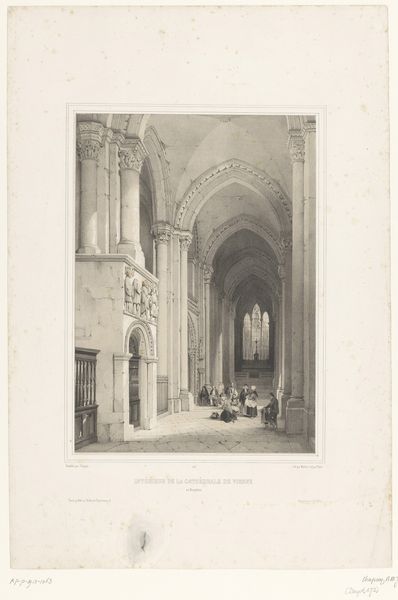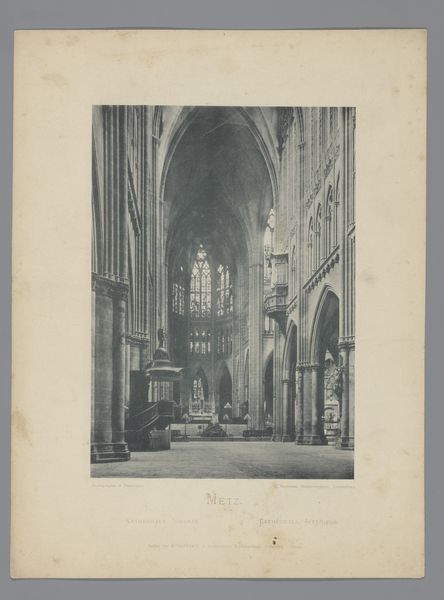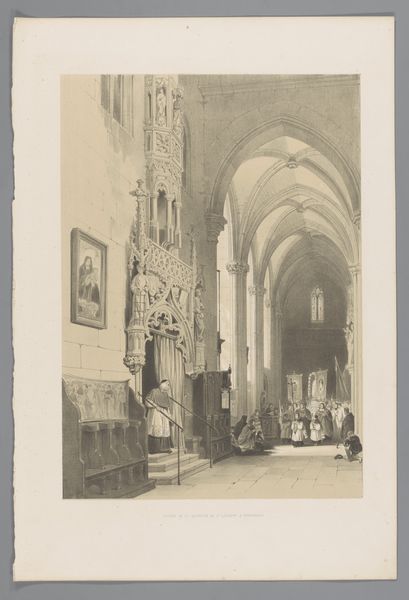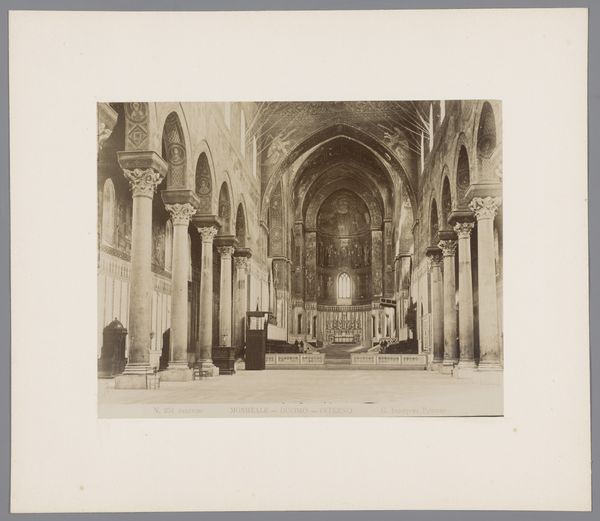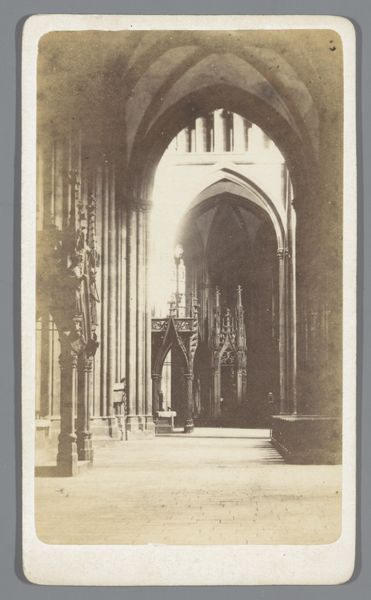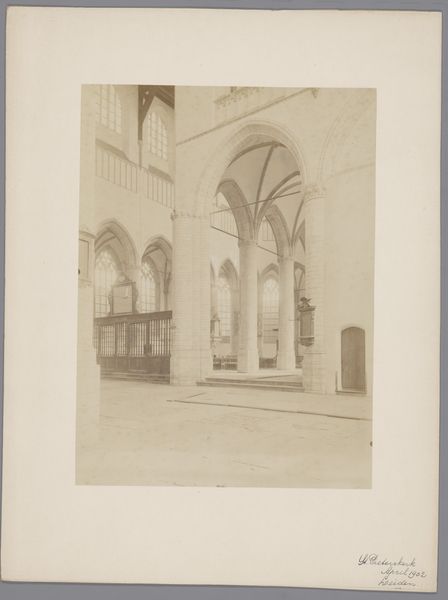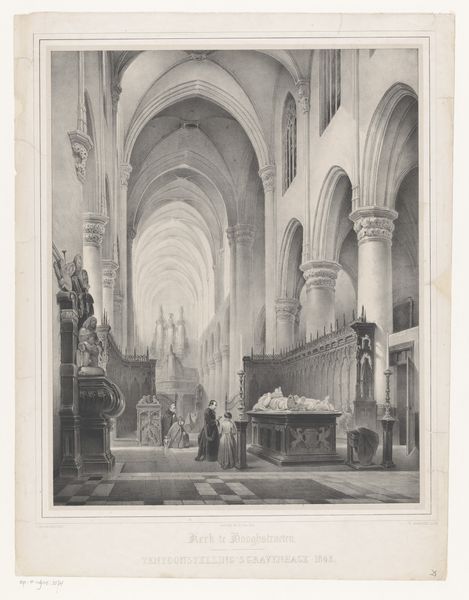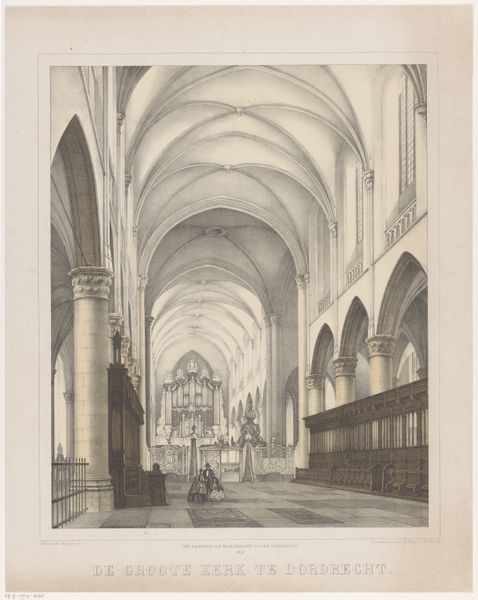
Dimensions: height 340 mm, width 264 mm
Copyright: Rijks Museum: Open Domain
Adolf Carel Nunnink created this artwork, Kerkinterieur, using etching, a printmaking technique that dates back to the Middle Ages. To create this print, Nunnink would have coated a metal plate with a waxy, acid-resistant substance, and then scratched an image into that coating with a pointed tool. The plate would then have been bathed in acid, which bit into the exposed metal, creating lines. The resulting plate could then be inked and used to create multiple impressions of the image, as we see here. Note the fineness of the lines, which capture the cavernous interior of the church. The printmaking process allowed Nunnink to distribute his art widely, making it accessible to a broader audience. While Nunnink was a trained artist, etching was also a crucial technique for the mass production of images in books and newspapers, blurring the lines between art, craft, and industry. In this way, the print is not only an image of a church, but a testament to the power of industrial means of production.
Comments
No comments
Be the first to comment and join the conversation on the ultimate creative platform.

